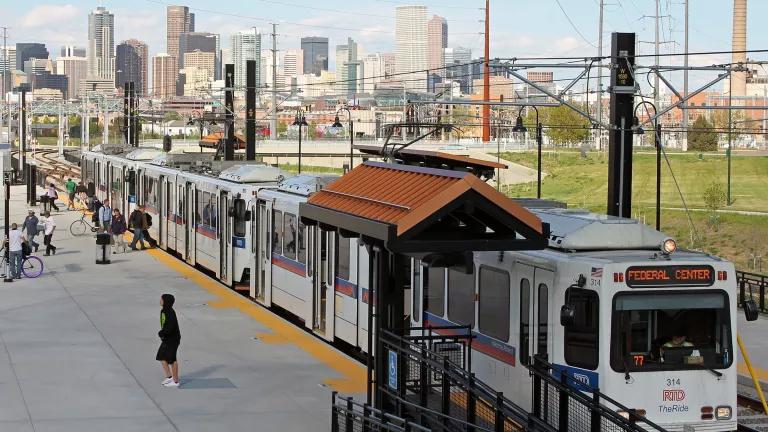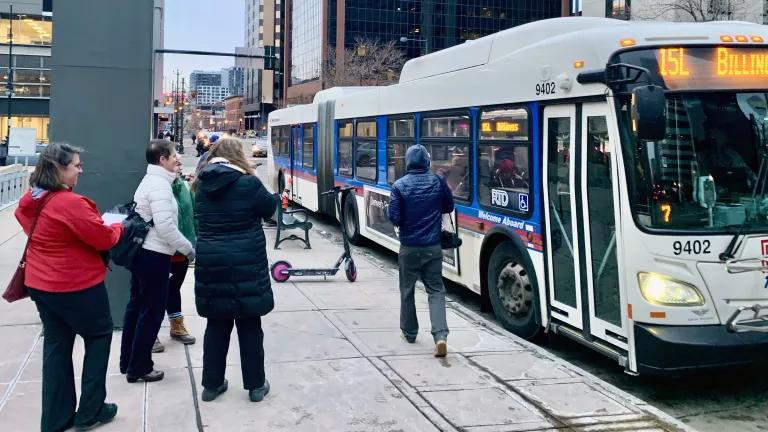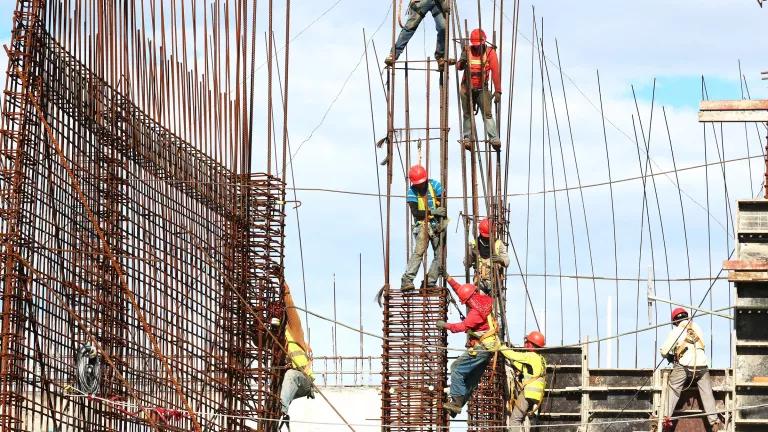Saint Paul Prioritizes People, Not Parking Spaces
Saint Paul has taken an ambitious and important step toward meeting its climate and equity goals, passing two new ordinances—one eliminating parking minimums, and the other introducing rules that prioritize safer, healthier, low-carbon transportation options in new development projects.

The City of Saint Paul joins a short list of U.S. cities who have eliminated parking minimums
Saint Paul has taken an ambitious and important step toward meeting its climate and equity goals, passing two new pieces of legislation last week—one eliminating minimum parking requirements from the City's zoning code, and the other introducing a new zoning ordinance that prioritizes safer, healthier, low-carbon transportation options in new development projects. Saint Paul is now among the largest cities in the country to fully eliminate minimum parking requirements, and joins a small but growing list of U.S. cities who have adopted best-in-class development rules to promote sustainable transportation choices.
Public comments and, in the end, City Council members supported the City’s policy, developed over the course of more than two years of thoughtful and thorough study by the Department of Planning and Economic Development. The City was supported in this effort by the Bloomberg Philanthropies American Cities Climate Challenge, with Climate Challenge partner Nelson\Nygaard providing technical assistance.
Minimum parking requirements: What are they good for? Absolutely nothing
Minimum parking requirements offer an important case study in the often counter-intuitive politics of local transportation climate action. Many residents support keeping these requirements in place because they fear increased traffic—yet these overly-burdensome requirements are a direct cause for traffic growth. Eliminating minimum parking requirements will not only reduce growth in traffic, but provide a host of other important benefits. Just a few cited by the City of Saint Paul:
- Housing affordability: A dedicated parking space adds $142/month to housing rents, on average. But not everyone needs or wants a dedicated parking space—in Saint Paul, more than one in eight households does not have access to a vehicle, and more than half of Saint Paul households have access to one vehicle or fewer according to 2019 American Community Survey data. This is especially true for lower-income households: More than a third of families who need and would qualify for housing affordable at the level of 30 percent of area median income do not own a car. Yet developers in so many American cities—even when building affordable housing—are nonetheless required by law to build parking spaces that many residents won’t use, don’t want, or simply cannot afford.
- Business flexibility: The pandemic has highlighted the importance of flexibility for businesses—especially local and service-sector businesses—in adapting to customer needs. For example, many restaurants wanted to convert parking lots to outdoor dining space when the pandemic necessitated it—and when many customers were no longer driving to commute. But minimum parking requirements would have required many of those restaurants to violate their zoning requirements in order to safely serve their customers.
- Economic development: Saint Paul is home to roughly 2,600 acres of off-street parking—more than four times the size of the City’s entire downtown. No one goes to a city or neighborhood to see its parking spaces—and fewer parking spaces would mean more of the things that attract and house people and businesses alike—more homes, more shops, more parks, more activities, and more community resources.
- Transportation options and climate change: Carbon emissions from driving account for about 20 percent of total U.S. emissions, and an estimated 31 percent of emissions in Saint Paul. More parking spaces generate more driving—both by making it easier to drive and by pushing destinations farther apart from each other, thus making it harder to travel by foot, by bike, by bus, or otherwise.
Minimum parking requirements apply to nearly every property and have been designed to exceed demand, so that there are almost always empty spaces. This inefficient practice slows investment by normalizing free, over-supplied parking. In Saint Paul, this means added costs of roughly $5,000 per space for surface parking and between $25,000 - $50,000 per space for structured parking—significantly increasing up-front development, ongoing debt-service, operations, and maintenance costs, which are then passed onto residents and tenants as higher rents.
Parking requirements have shaped how we build our cities over decades as a now-typical component of zoning codes, often turning historically walkable, livable neighborhoods (or former natural habitats) into parking lots that prioritize vehicles over people. These requirements make it harder to navigate our communities without driving, and in doing so make streets and neighborhoods less safe while adding traffic to our streets—not to mention exacerbating the urban heat island effect, and all of the other issues listed above. These negative impacts have accrued subtly over time, but their cumulative impact on undermining urban public health, safety, and quality of life is hard to overstate.
Complementing parking reforms with improved transportation options
Saint Paul did not stop at eliminating these antiquated requirements, however, which is merely a first step—the City also joins a growing list of peers (including Climate Challenge cities Boston and San Diego) in updating its transportation demand management (TDM) policy to make it more comprehensive and easier to use. This policy requires new developments to invest in amenities that enable residents and tenants to more easily walk, bike, or take public transit. Under Saint Paul’s policy, developers choose from a menu of TDM strategies, each of which contributes points toward a required threshold that is determined by the development type and size.
These TDM strategies complement the elimination of minimum parking requirements, since more people walking and biking also means less demand for parking spaces. This creates a virtuous cycle of reducing demand for driving and enabling developers to reduce supply of car-oriented infrastructure, replacing a vicious cycle of more driving, more traffic, more demand for parking, more pollution, and more car-oriented development. This vicious cycle of car dependence has become the status quo in nearly every American city, and Saint Paul is among the first in the nation to implement both of these critical parking and TDM strategies as part of a broader effort to disrupt the costly, polluting, and inequitable transportation and land use policies that otherwise reinforce the cycle.

Saint Paul's new legislation complements parking reforms with ambitious TDM policy
Minimum parking requirements are an outdated policy that exacerbate inequality in housing affordability and transportation access, lead to more traffic and pollution, and ultimately serve no one. More cities—and states—should be following Saint Paul’s lead in eliminating these counterproductive, burdensome, and pollution-inducing requirements and replacing them with support for and incentives to choose low-carbon transportation options.



